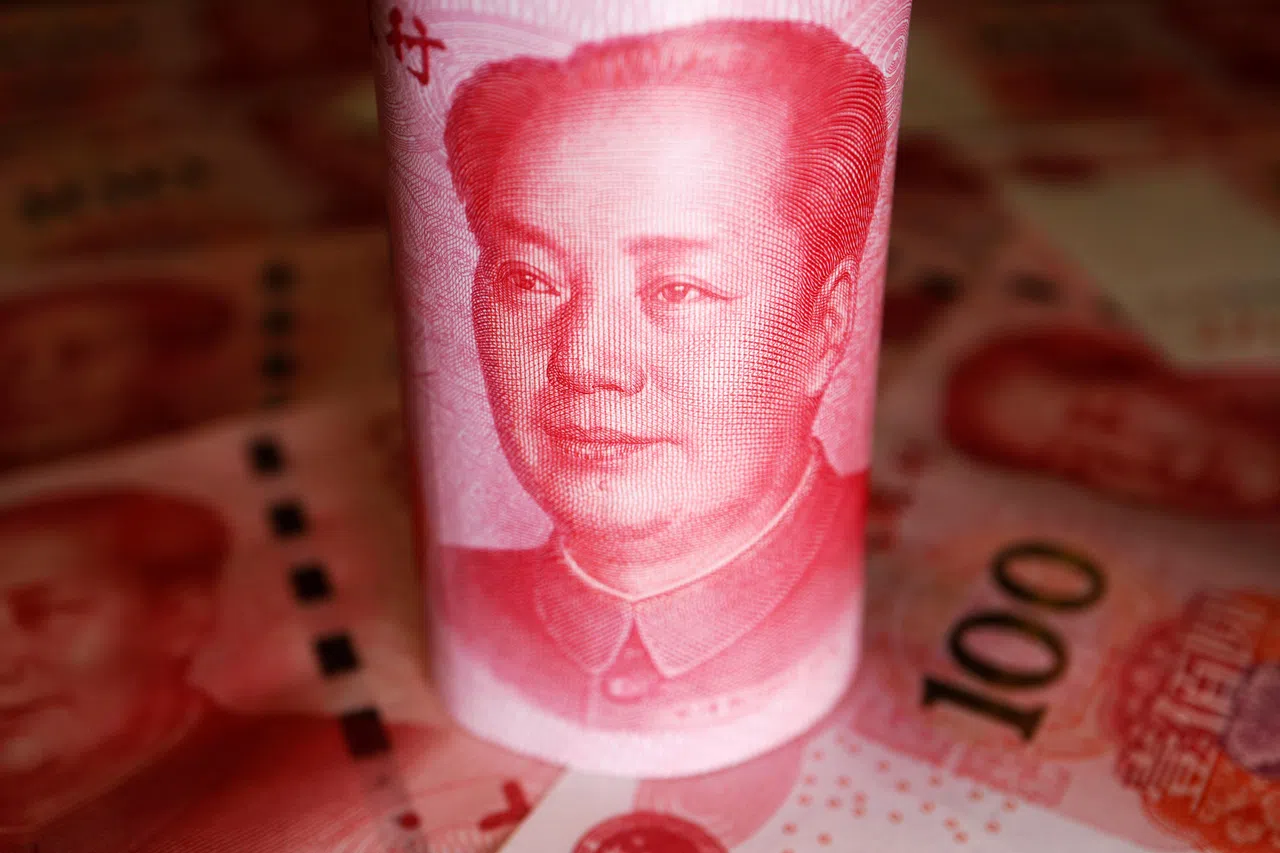[ad_1]
CHINA set the yuan’s daily reference rate at its weakest since November in a sign policymakers are loosening their grip on the currency.
The People’s Bank of China (PBOC) set the so-called fixing at 7.1192 per US dollar, an increase of 33 ticks, the most in about two months. The move comes as the US dollar inches closer to this year’s peak, with traders betting on higher-for-longer interest rates in the US.
The onshore yuan was little changed around the 7.26 level, while the offshore currency slipped to its weakest this year. The fixing came as Chinese banks maintained their benchmark lending rate for a 10th straight month, as pressure on the yuan restricts policymakers’ space for easing.
“The creep higher in the fixing continues, as it approaches the next psychological big figure level of 7.12,” said Khoon Goh, head of Asia research at ANZ Group Holdings. A higher fixing level versus the US currency allows for a weaker yuan.
“The top of the trading band now greenlights onshore spot to push past 7.26, an indication that the authorities are accommodating a bit more yuan weakness to relieve some depreciation pressure,” Goh said. He added he didn’t expect authorities to allow large depreciation moves.
The weakness in China’s currency is symptomatic of deteriorating sentiment towards the world’s second-largest economy, which is also experiencing a bond market rally as investors seek out haven assets. Yields have tumbled to or towards record lows amid mixed economic data and expectations of further stimulus.
BT in your inbox

Start and end each day with the latest news stories and analyses delivered straight to your inbox.
Worsening capital outflows, seen in a surge in local firms’ purchase of foreign exchange and exporters’ hoarding of the US dollar, have also added to the yuan’s woes. And from the US dollar’s side, any delay to Federal Reserve rate cuts would likely add more pressure on the yuan as China’s wide interest-rate gap with the US favours the greenback.
China has maintained a strong hold on the yuan using its daily reference rate for most of the year. However, it has been gradually weakening its so-called currency fixing amid calls from former officials for relaxing its control over the yuan in order to open the room for more easing.
On Wednesday (Jun 19), PBOC governor Pan Gongsheng signalled there is more room to ease monetary policy as other economies are pivoting to cut rates this year. The appreciation momentum of the US dollar is weakening, which will help keep the yuan stable and expand the room for China’s monetary policy, he said.
For Becky Liu, head of China macro strategy at Standard Chartered Bank, the weaker fixing was a delayed reflection of earlier strength in the US dollar and not yet sufficient to conclude it’s a move far from the recent norm.
“The PBOC continues to manage this depreciation pressure with very gradual adjustments to the fixing,” said Lynn Song, greater China chief economist at ING Bank. “Given this policy stance, we continue to expect last year’s US dollar-onshore yuan high of 7.34 will not be broken this year despite more pressure from yield spreads.” BLOOMBERG
[ad_2]
Source link




